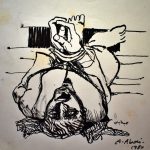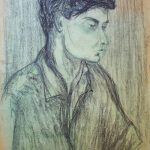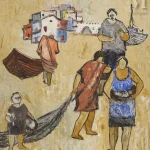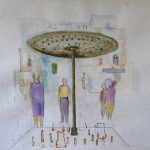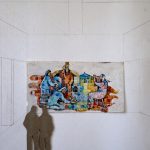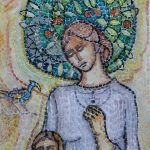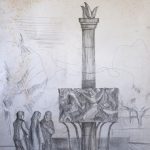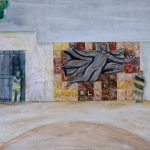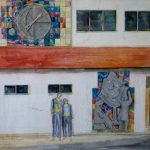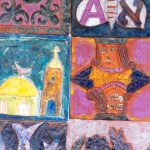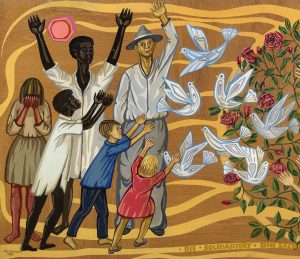
Originaly published in German in Junge Welt, Aus: Ausgabe vom 05.03.2024, Seite 11 / Feuilleton
By Gerhard Hanloser.
From the perspective of the Global South: An exhibition at the Berlin House of World Cultures about good and bad experiences with the GDR
No, this GDR exhibition is not a “West German invention.” It is not the projection space of the Western capitalist victors; rather, the visitor to the Berlin House of World Cultures (HKW) is confronted with a nuanced image of the GDR from the perspective of the Global South. “What is the price of memory, and how high are the costs of amnesia? Or: Visions and illusions of anti-imperialist solidarity” is the long and meaningful title of the new exhibition, which opened on March 1st. The permanent flag installation in the access curve to the Kulturpalast could appear playful and arbitrary. Olu Oguibe has printed the letter sequence GDR on three flags, combining the black-red-yellow-green background with the colors of the pan-African movement and those of the German flag. The Nigerian-American conceptual artist unpacks the abbreviation in a climate-driven, anticolonial, and spirit of global justice: “Decarbonize, Decolonize, Rehabilitate.”
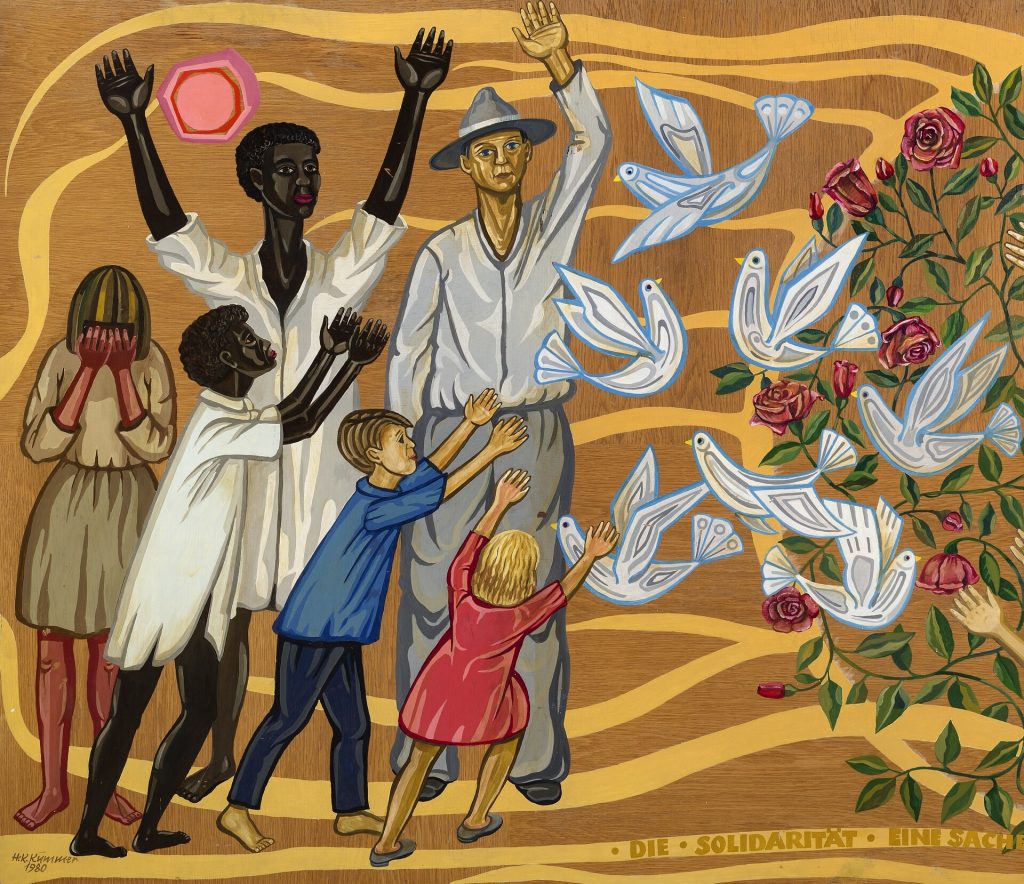
The GDR, the real socialist society on German soil, doesn’t come off entirely badly in the two exhibition rooms and installations in the foyer. It even appears, in the face of a world dominated by global capitalism, as a place of longing, at least as a rediscoverable potential. “We don’t want to glorify the GDR,” says artistic director and chief curator Bonaventure Soh Bejeng Ndikung, “but we also don’t want to demonize it.” There have been diverse experiences and moving encounters under the banner of international solidarity. This is illustrated not least by a carefully selected wall of posters advocating for Puerto Rico, Chile, Cuba, the call for Afro-communism, and against South African apartheid. The results of the cultural agreement between the GDR and Ethiopia from 1978 can be examined here, as well as graphics by Abed Abdi, a young artist who came to the Dresden Academy of Fine Arts through the Communist Youth Union of Palestine, where he was mentored by the Jewish German anti-fascist Lea Grundig. Three paintings and a textile work from the Beeskow Art Archive, all imbued with the spirit of global solidarity, are also featured. The tapestry “Symbols of German-Soviet Friendship” from 1977 was created jointly by students of the Berlin-Weißensee Art Academy and the “Vera Mukhina” Institute of Applied Arts in Leningrad. Horst Weber’s oil-on-canvas collage featuring newspaper articles about global repression against liberation movements is titled “Human Behavior.” Perhaps most impressive is the oil painting by Berlin artist Christoph Wetzel, which depicts children from Palestine, Ethiopia, Nicaragua, Vietnam, Lebanon, and the Congo alongside a German boy. Their defiant, assertive gazes are full of resilience, but their faces also bear the experience of racism and exclusion.

The exhibition makes it clear that despite all the proclaimed and lived international solidarity, this self-assertion of the GDR remained an illusion in some aspects. Several installations and exhibits are from artists who themselves come from families of so-called contract workers, for example from Mozambique, or who dealt with the memory and knowledge of these migrants. In their home country, they are referred to as “Madgermanes,” a play on the product label “Made in Germany,” which also means “the crazy Germans.” It’s no wonder, as they had to live in relatively separate dormitories in the GDR, faced everyday racism, women were coerced into abortion during pregnancy, and finally, all Mozambican contract workers were expelled by the Federal Republic in 1990. Many are still seeking compensation or unpaid wages and pensions. Art here also serves as a means of processing bitter experiences, such as a model of a Jugendstil fountain with an angelic child surrounded by water, created by an artist who was coerced into abortion.

Old comrades and young communists who hold the GDR dear to their hearts will have to show a lot of tolerance for ambiguity here. Ideally, in the face of these artistic expressions of negative experiences with the German attempt at socialism, they will also remember the helpful concept of self-criticism found in Marx. The mere presentation of the multitude of artistic results and fascinating possibilities of exchange that the GDR offered to talented young fighters from all over the world – from Chile to Palestine to the African continent – makes visiting this exhibition a must for all those who do not want to leave the GDR as a colonial-West German invention in historical discourse.



